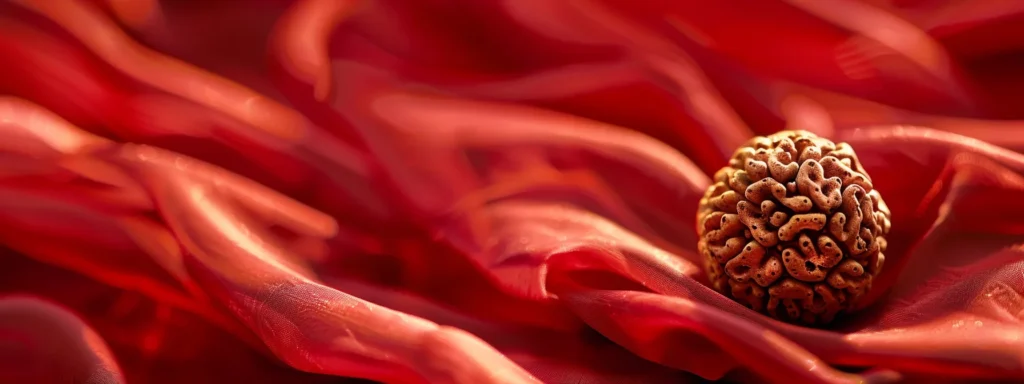Rudraksha Therapy
Exploring the Historical Significance of Three Mukhi Rudraksha
Three Mukhi Rudraksha is often revered for its spiritual and healing properties, but its historical significance remains less understood. This blog post will dive into its origins, explore references in sacred texts and puranas, and examine the mythology surrounding this powerful seed. Readers will gain insight into how this rudraksha symbolizes faith and devotion, while also uncovering its cultural impact through history. By understanding the legacy of the Three Mukhi Rudraksha, individuals can appreciate its role as both a spiritual tool and a connection to the divine goddess.
Key Takeaways
- Three Mukhi Rudraksha promotes meditation and emotional balance, enhancing spiritual growth
- The bead is deeply rooted in ancient Vedic traditions and texts emphasizing its significance
- Using the Three Mukhi Rudraksha during rituals helps alleviate spiritual burdens and supports personal transformation
- It symbolizes courage and resilience, connecting practitioners with divine energies for guidance
- Educational initiatives are vital for preserving the historical significance and cultural practices of the Rudraksha
Tracing the Origins of Three Mukhi Rudraksha
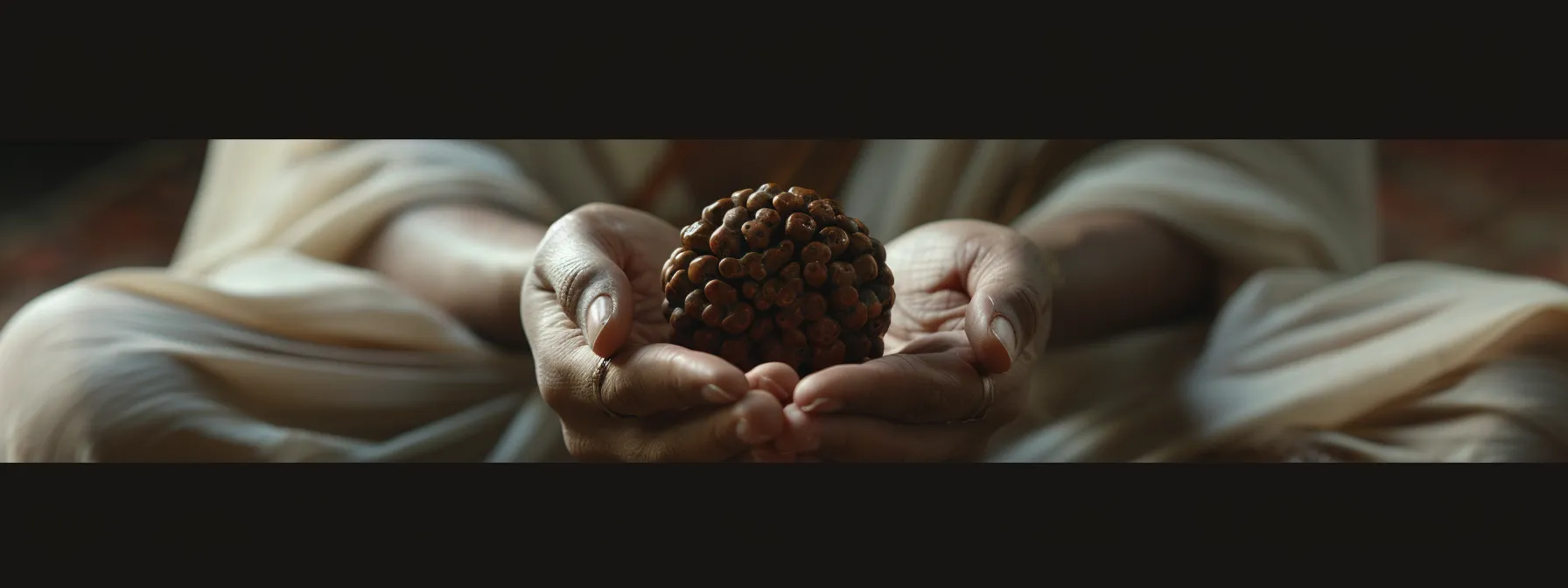
The origins of Three Mukhi Rudraksha can be traced back to ancient civilizations, where it was revered for its unique properties. This sacred seed has played a significant role in spiritual practices, particularly in chanting and japa with the mantra “Om Namah Shivaya.” Furthermore, it embodies the essence of courage, connecting deeply with Vedic traditions that celebrate its transformative powers.
Explore Its Roots in Ancient Civilizations
The Three Mukhi Rudraksha is deeply rooted in ancient civilizations such as India, where it has been documented in various religious texts. These texts highlight the significance of the bead in meditation practices, emphasizing its profound connection to inner wisdom. The mantra “Om Namah Shivaya” is often recited alongside this sacred seed, enhancing the meditative experience and fostering a deeper connection to one’s spiritual journey.
This Rudraksha is believed to hold the memory of past actions, making it a powerful tool for self-reflection and growth. Ancient sages recognized its value in promoting clarity of thought and emotional balance. The bead’s properties allow individuals to cultivate a sense of courage and resilience, which contributes to a more fulfilling life, particularly for those seeking guidance on their path.
Throughout history, spiritual practitioners have utilized the Three Mukhi Rudraksha to enhance their meditation sessions. Its presence aids in attaining a focused mind, vital for effective contemplation. As societies evolved, this bead‘s holistic benefits continued to resonate with seekers looking for ways to enhance their spiritual practices and personal growth:
Discover Early Uses in Spiritual Practices
The Three Mukhi Rudraksha has been integral to spiritual practices, especially within the Shaivism tradition. It was believed that the bead enhances shakti, or spiritual energy, allowing practitioners to connect deeply with their inner selves. This connection aids individuals in overcoming feelings of guilt, promoting emotional healing and personal growth.
Early users of the Three Mukhi Rudraksha often combined it with sandalwood during meditation rituals. Sandalwood, known for its calming properties, complements the bead by creating a serene environment that fosters focus. This combination has historically supported countless devotees in their spiritual journeys, enabling a stronger bond with their guru and the divine.
As a symbol of transformation and self-realization, the Three Mukhi Rudraksha serves as a reminder of one’s potential. It encourages individuals to let go of emotional burdens, leading to a clearer mind and more purposeful life. Those seeking spiritual guidance often rely on this bead, which embodies the teachings of ancient sages, allowing them to navigate their paths with confidence and clarity:
- The use of Three Mukhi Rudraksha in Shaivism highlights its significance in enhancing spiritual energy.
- Combining the bead with sandalwood aids in creating a tranquil meditation space.
- Ultimately, it serves as a reminder of personal transformation and emotional healing.
Learn About Its Role in Vedic Traditions
The Three Mukhi Rudraksha has a notable position within Vedic traditions, where it is believed to embody the essence of the deva, or divine energies. This sacred seed is often associated with the Gayatri mantra, a powerful Sanskrit chant known for its ability to dispel fear and promote clarity. When recited alongside the Three Mukhi Rudraksha, the mantra enhances the bead‘s energy, fostering spiritual growth and inner peace.
Furthermore, the Three Mukhi Rudraksha is regarded as a gemstone of transformation, supporting practitioners in overcoming internal struggles. Vedic texts emphasize its role in facilitating emotional healing, thereby allowing individuals to release fear and embrace their true selves. By forging a deeper connection with the divine, users often find courage and confidence in navigating life’s challenges.
For those exploring personal development, integrating the Three Mukhi Rudraksha into daily practices can lead to significant transformations. This bead serves as a reminder to embrace one’s potential and pursue a path of self-realization. Through disciplined practice and intention, seekers can experience profound growth, echoing the teachings of ancient sages:
- Three Mukhi Rudraksha embodies divine energies.
- It connects deeply with the Gayatri mantra for clarity and peace.
- Acts as a transformative gemstone to dispel fear.
- Encourages emotional healing and personal growth.
The journey of the Three Mukhi Rudraksha reveals deep ties to ancient practices. Next, the reader will explore how sacred texts reference this powerful bead, unveiling its significance through time.
Examining Historical References in Sacred Texts
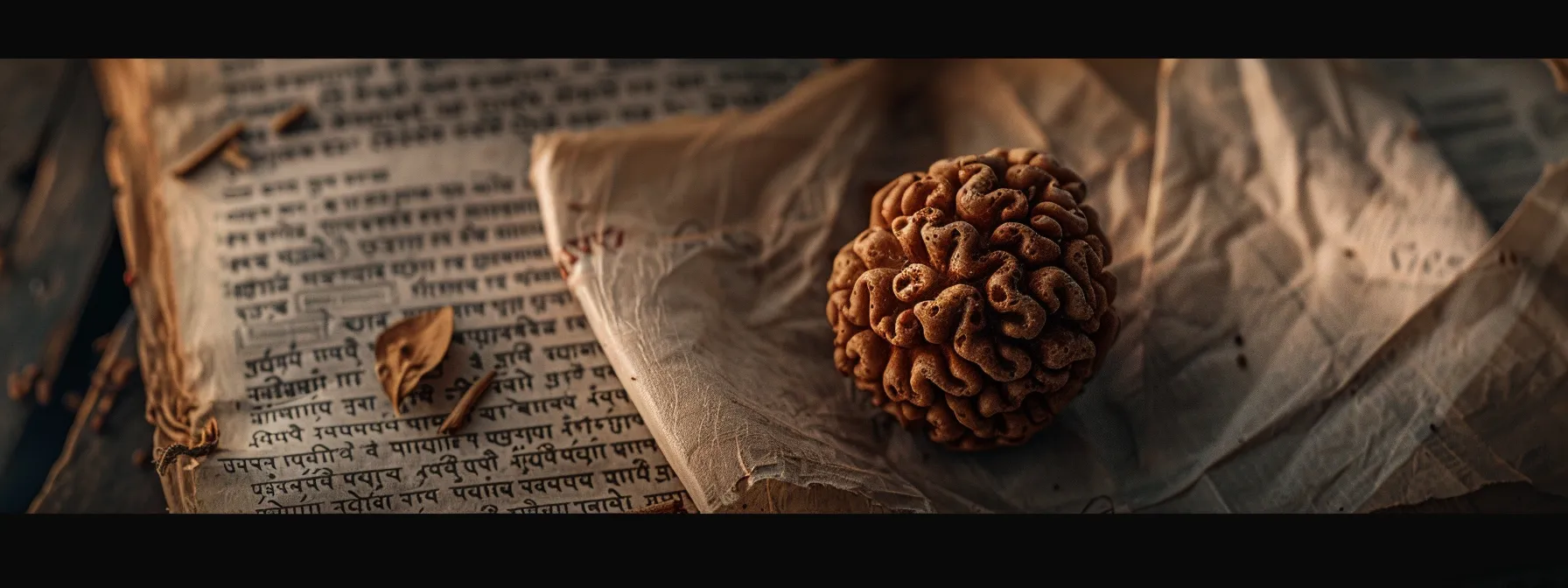
This section delves into the historical significance of the Three Mukhi Rudraksha as documented in sacred texts. The analysis begins with mentions in the Shiva Purana, focusing on the bead‘s connection to energy and stress relief during puja. It continues with descriptions in the Upanishads, emphasizing its role in the Manipura chakra. Lastly, it uncovers the significance of the Rudraksha in the Mahabharata and Ramayana, linking it to the spiritual myths and cultural heritage of these epics.
Investigate Mentions in the Shiva Purana
The Shiva Purana provides a valuable insight into the significance of the Three Mukhi Rudraksha, particularly its role in enhancing spiritual practices. As a revered form of japamala, this sacred bead aids practitioners in their worship and meditation rituals. By incorporating the Three Mukhi Rudraksha into their daily routines, individuals connect more deeply with their spirituality, allowing them to achieve greater focus and tranquility during their practices.
The text highlights how the Three Mukhi Rudraksha is believed to support the journey toward moksha. Sages in the Shiva Purana emphasize that by using this bead while chanting mantras, devotees can alleviate their spiritual burdens, facilitating personal transformation and growth. This reflection on the bead’s role reinforces its importance in the quest for liberation, affirming its status within Vedic literature.
Furthermore, the teachings in the Shiva Purana underline the connection between the Three Mukhi Rudraksha and the vibrant core of human emotions. As practitioners turn to this bead during their worship, they engage not only in acts of devotion but also in a process of self-discovery. The Three Mukhi Rudraksha serves as a reminder of the power of intention, encouraging seekers to explore the depth of their spirituality and to embrace the wisdom found in the Vedas.
Analyze Descriptions in the Upanishads
The Upanishads provide a profound insight into the significance of the Three Mukhi Rudraksha, often associating it with the deity Rudra. This connection highlights the bead‘s energetic properties and its role in addressing various emotional states, including anger. Engaging with the Three Mukhi Rudraksha during meditative practices allows practitioners to channel the divine qualities of Rudra, promoting inner peace and emotional balance.
In the context of knowledge and spiritual awakening, the Upanishads emphasize the importance of the Three Mukhi Rudraksha in enhancing mental clarity. The bead serves as a support system for individuals facing challenges such as disease and emotional turmoil. By incorporating the Rudraksha into meditation routines, practitioners can cultivate a deeper understanding of their inner selves, facilitating healing and personal growth.
The Upanishads also illustrate how the Three Mukhi Rudraksha aids in the pursuit of enlightenment. By connecting users with the wisdom of ancient sages, the bead acts as a bridge to greater knowledge. This spiritual tool encourages individuals to overcome their obstacles and embrace transformation, ultimately aligning them with their higher purpose.
Uncover Significance in the Mahabharata and Ramayana
The significance of the Three Mukhi Rudraksha is prominently highlighted in the Mahabharata and Ramayana, two revered epics revered in Hindu religion. Both texts explore the theme of the soul’s journey, emphasizing the bead’s capacity to facilitate spiritual growth and connect practitioners with divine energies. Engaging with the Three Mukhi Rudraksha during moments of prayer can aid in addressing sins and fostering a clearer understanding of one’s path toward liberation.
In these ancient scriptures, the concept of kumkuma, a sacred powder often used in rituals, is linked to the energy of the Three Mukhi Rudraksha. This connection illustrates the bead‘s role in rituals aimed at purifying the soul and promoting a sense of tranquility. Together, the practices associated with the Rudraksha and kumkuma reflect the broader philosophical teachings of the trimurti, which represent the cosmic functions of creation, preservation, and destruction.
Moreover, the Mahabharata and Ramayana convey numerous stories that showcase the transformative powers of the Three Mukhi Rudraksha. These narratives reveal how characters in the epics utilized this sacred bead for overcoming challenges and achieving personal growth. Such insights can inform contemporary spiritual seekers looking to embrace the teachings from these timeless texts and implement them into their spiritual practices:
- Connection between the Three Mukhi Rudraksha and the soul‘s journey.
- Kumkuma‘s role in enhancing ritual effectiveness.
- Reflection of the trimurti’s teachings through the bead’s energy.
Sacred texts provide a backdrop rich with insights, but deeper truths often lie in the stories we tell ourselves. The mythology surrounding the Three Mukhi Rudraksha reveals layers of meaning that connect us to something greater.
Delving Into Mythology Surrounding Three Mukhi Rudraksha

Legends of Lord Agni and the Rudraksha reveal the deep-rooted connections between mythology and spirituality. The stories surrounding transformation and renewal highlight the bead‘s significance in promoting mental clarity and emotional balance, essential for improving concentration. Additionally, interpretations of symbolism in mythological tales, including references to zodiac beliefs, enhance the understanding of the Three Mukhi Rudraksha‘s role in spiritual practices, such as managing blood pressure and connecting with divine energies like Lord Vishnu.
Unravel Legends of Lord Agni and the Rudraksha
Legends surrounding Lord Agni and the Three Mukhi Rudraksha seed highlight its importance in spiritual practices. Lord Agni, representing fire and transformation, is often associated with the qualities of courage and resilience that the Three Mukhi Rudraksha bead embodies. As prayer beads, these seeds connect devotees with the divine energies, fostering a deeper understanding of their spiritual journey.
In mythology, Lord Agni served as a mediator between humans and the deities, symbolizing the connection between the earthly and the divine. The Three Mukhi Rudraksha is believed to enhance this connection, allowing individuals to access the blessings of other deities like Brahma and Lakshmi. By using this bead during meditation, practitioners can invite clarity and harmony into their lives, reflecting the transformative power associated with Lord Agni.
Stories about Lord Agni emphasize the transformative aspect of fire, mirroring the self-discovery enabled by the Three Mukhi Rudraksha. This bead acts as a catalyst for personal growth, encouraging individuals to shed emotional burdens and navigate their lives with confidence. Engaging with the bead in prayer rituals enables seekers to achieve mental clarity and emotional balance, addressing their need for guidance along their spiritual path.
Understand Stories of Transformation and Renewal
The stories surrounding the Three Mukhi Rudraksha emphasize its role in transformation and renewal, drawing on rich mythological narratives. In these tales, the bead is associated with the goddess Parvati, who embodies strength and creativity. Practitioners use this holy seed to overcome feelings of inferiority, fostering a sense of self-worth and confidence, as they navigate their personal journeys.
The significance of the Rudraksha resonates deeply with the concept of shaligram, a sacred stone in Hindu tradition associated with Lord Vishnu. Both the Rudraksha and shaligram serve as spiritual tools that encourage users to recognize their potential, helping to alleviate pressure and stress. These ancient symbols promote a pathway toward emotional and spiritual balance, allowing individuals to embrace change in their lives.
Through the lens of transformation, the Three Mukhi Rudraksha becomes more than just a spiritual artifact; it serves as a catalyst for personal development. Users often report enhanced mental clarity and emotional resilience when incorporating the bead into their meditation practices. This consistent practice allows individuals to harness the transformative energy of the Rudraksha, empowering them to live more fulfilling lives and achieve their highest aspirations.
Interpret Symbolism in Mythological Tales
The mythology surrounding the Three Mukhi Rudraksha often highlights its ability to offer relief from various emotional and psychological challenges. In many tales, this powerful bead is associated with the goddess Devi, representing strength and resilience. As practitioners incorporate the Rudraksha into their prayer rituals, they find a deeper connection that fosters personal growth and helps combat feelings of laziness and procrastination.
Furthermore, stories related to the Three Mukhi Rudraksha emphasize the importance of spiritual practice in achieving success. The bead serves as a reminder of the power of dedication and the impact of belief in one’s abilities. When integrated into daily rituals, the Rudraksha can motivate individuals to pursue their aspirations with clarity and focus, highlighting the transformative potential present within spiritual practices:
- Symbol of relief from emotional challenges.
- Represents strength through the goddess Devi.
- Encourages confidence and personal transformation.
- Enhances the effectiveness of prayer rituals.
Myth and reality often weave together, shaping beliefs and practices. Understanding the cultural impact of the Three Mukhi Rudraksha reveals how deeply its essence influences lives through history.
Assessing Cultural Impact Through History
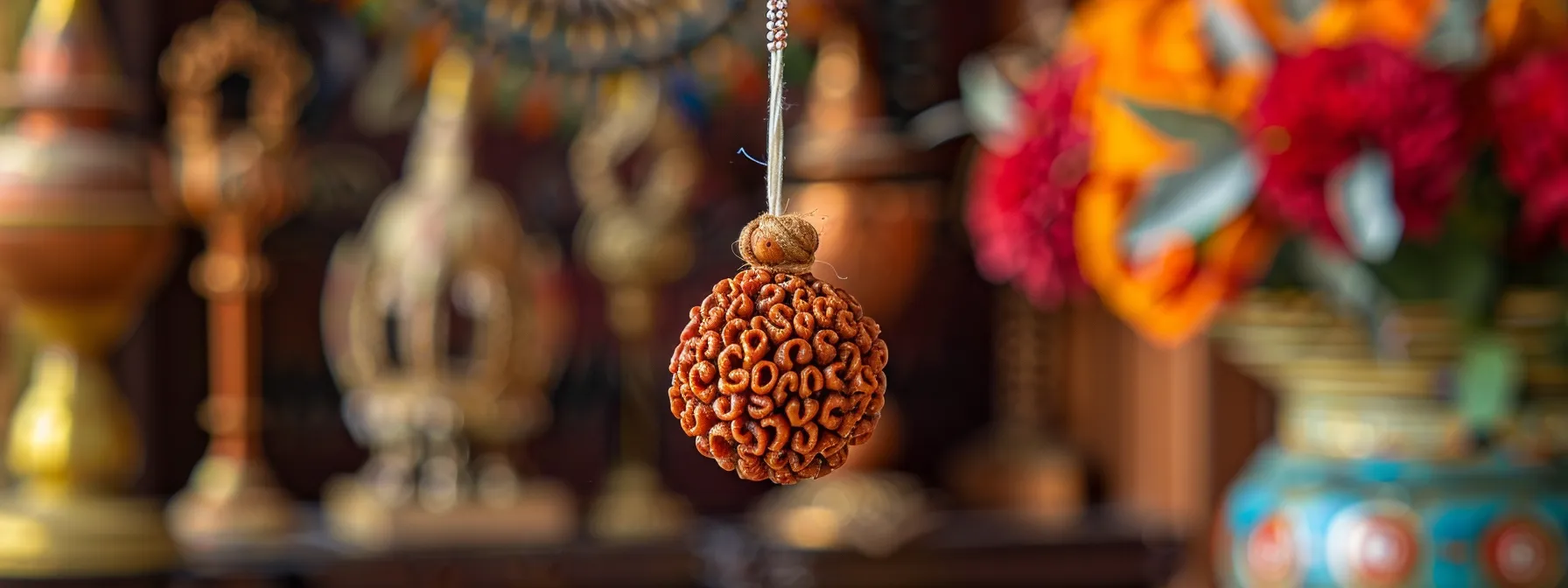
The Three Mukhi Rudraksha holds historical significance across various cultures, highlighting its role in ancient rituals and ceremonies. This section will review its use in practices dedicated to deities like Kartikeya and Saraswati, examine its influence on historical healing practices often linked to blood purification, and observe its adoption as a garland or pendant in different regions. Each topic underscores the bead’s enduring spiritual and cultural relevance.
Review Use in Ancient Rituals and Ceremonies
The Three Mukhi Rudraksha has been integral to various ancient rituals and ceremonies across Hinduism. Celebrated for its spiritual benefits, it has traditionally been used in blessings and worship at significant sites such as the Pashupatinath Temple in Nepal. Devotees often incorporate the bead into their rituals, aiming to enhance their spiritual experiences and seek divine guidance.
Furthermore, the Three Mukhi Rudraksha plays a crucial role in practices like 3 Mukhi Agni Therapy, where it is believed to channel the transformative energy of fire. This therapy supports practitioners in achieving emotional and spiritual balance, encouraging personal growth. The bead’s presence during these rituals helps individuals focus their intentions while invoking the necessary blessings for comprehensive healing.
In homes and temples, the Three Mukhi Rudraksha is often used in decorative garlands or pendants, symbolizing strength and resilience. For those exploring spirituality, integrating the Rudraksha into daily practices, such as meditation or prayer, aligns with the principles of Fimagine Home, promoting a holistic lifestyle. Such practices enhance the bead’s cultural relevance, reflecting its enduring significance in spiritual and personal development.
Examine Influence on Historical Healing Practices
The historical influence of the Three Mukhi Rudraksha on healing practices is well-documented, particularly within Ayurvedic traditions. Practitioners have long recognized its properties in balancing energies and promoting overall well-being. The bead‘s use in rituals and meditation serves to purify the mind and body, helping individuals alleviate stress and anxiety, critical components of holistic health.
In ancient healing practices, the Three Mukhi Rudraksha was often combined with herbal remedies to enhance their effects. It was believed that the bead could amplify the healing properties of various herbs, creating a synergy that supported physical and emotional recovery. These practices underscored the interconnectedness of spiritual and physical health, highlighting how the Rudraksha could play a vital role in comprehensive healing approaches.
The cultural significance of the Three Mukhi Rudraksha persists in modern holistic therapies, where it continues to aid individuals seeking emotional clarity and mental focus. As more people turn to alternative healing methods, the Rudraksha‘s historical use in emotional balancing remains relevant. Integrating it into daily routine can provide individuals with a practical tool for navigating the challenges of contemporary life, promoting resilience and personal growth.
Observe Adoption Across Different Regions and Cultures
The Three Mukhi Rudraksha has found adoption across various regions and cultures, illustrating its broad appeal and significance in spiritual practices. In India, particularly among Hindu communities, this sacred seed is commonly used in meditation and rituals, emphasizing its connection to divine energies and personal growth. As practitioners engage with the bead, they experience profound transformations that reflect its historical importance in facilitating emotional balance and spiritual clarity.
In Nepal, the cultural significance of the Three Mukhi Rudraksha is key to many local rituals and ceremonies. Devotees use the bead in significant temples, such as the Pashupatinath Temple, to deepen their meditation and connect with divine powers during worship. This connection showcases how the Rudraksha serves as a vital element not only for personal spiritual practices but also as a collective symbol of faith in the region.
Globally, the rising interest in holistic practices has seen the Three Mukhi Rudraksha integrated into modern wellness routines. Practitioners outside traditional cultures incorporate the bead into meditation, yoga, and energy healing sessions, recognizing its benefits for calming the mind and fostering emotional resilience. This trend signifies a growing appreciation for the cross-cultural relevance of the Three Mukhi Rudraksha as a tool for personal and spiritual development worldwide.
Cultural artifacts tell stories that often slip through the cracks of time. Within these tales lies the Three Mukhi Rudraksha, a gem of history waiting to be uncovered.
Investigating Three Mukhi Rudraksha in Historical Artifacts
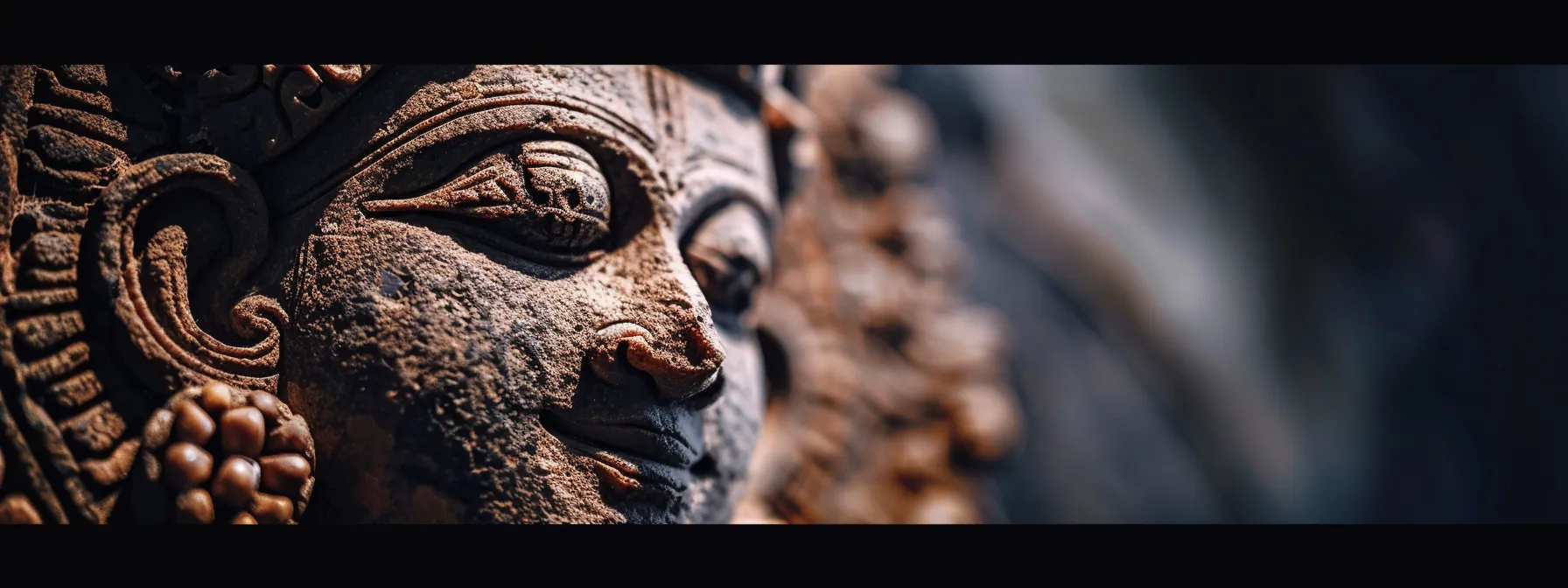
This section focuses on the historical significance of the Three Mukhi Rudraksha as evidenced by various artifacts. It includes a study of depictions in ancient sculptures and paintings, which illuminate the bead‘s cultural importance. Archaeological discoveries reveal its presence in historical contexts, while preserved pieces in museums highlight its enduring relevance. Each aspect contributes to a comprehensive understanding of the Three Mukhi Rudraksha‘s role in spiritual practices through the ages.
Study Depictions in Ancient Sculptures and Paintings
Depictions of the Three Mukhi Rudraksha in ancient sculptures and paintings serve as valuable indicators of its historical significance in spiritual practices. Often illustrated alongside deities, these representations emphasize the bead‘s connection to divine energies and its importance in rituals aimed at achieving spiritual growth. Such artworks not only reflect the reverence for the Rudraksha but also its integral role within the broader context of Vedic traditions.
Furthermore, various ancient artifacts showcase the Three Mukhi Rudraksha as an essential element in ceremonial practices. Sculptures frequently depict figures in meditation, holding the Rudraksha, which highlights its use in enhancing focus and emotional stability. These images encapsulate the bead‘s transformative qualities, illustrating how it has been a crucial tool for practitioners seeking clarity and inner peace throughout history.
The presence of the Three Mukhi Rudraksha in historical artifacts also reveals its cultural relevance across different eras. Paintings from various periods often contain symbols associated with the bead, reinforcing its significance in personal and communal spiritual journeys. Therefore, by examining these artistic representations, one can gain deeper insights into the timeless value of the Three Mukhi Rudraksha in fostering a connection to the divine and promoting personal development.
Explore Findings From Archaeological Discoveries
Archaeological discoveries have significantly contributed to understanding the historical significance of the Three Mukhi Rudraksha. Excavations in key historical sites across India have revealed numerous artifacts, including jewelry and ceremonial objects that incorporate this sacred seed. Such findings highlight the bead‘s integral role in ancient rituals and its esteemed status among spiritual practitioners.
Notable excavations near temples dedicated to deities like Lord Shiva and Goddess Parvati showcase instances where Three Mukhi Rudraksha beads were found in ritualistic contexts. These artifacts signify their use in pujas and ceremonies aimed at enhancing spiritual energy. The association of these beads with specific deities further illustrates the reverence given to the Three Mukhi Rudraksha in the pursuit of spiritual growth and emotional healing throughout history.
In museums, preserved artifacts featuring the Three Mukhi Rudraksha serve as tangible links to the past. These artifacts not only preserve the aesthetic aspects of ancient cultures but also offer insights into the spiritual practices of earlier civilizations. By studying these historical items, contemporary seekers can gain a deeper appreciation of the enduring significance of the Three Mukhi Rudraksha in their spiritual journeys.
Visit Preserved Pieces in Museums and Collections
Visiting preserved pieces of Three Mukhi Rudraksha in museums and collections offers a unique opportunity to explore the historical significance of this sacred bead. Many museums showcase artifacts that illustrate the cultural and spiritual practices surrounding the Rudraksha throughout history. These displays provide insights into how the bead was utilized in ancient rituals, enhancing the understanding of its role in promoting emotional balance and personal growth.
In these settings, visitors can observe authentic pieces that date back centuries, demonstrating the reverence held for the Three Mukhi Rudraksha in various cultures. Museums often provide informative context about the bead‘s origins, its association with deities, and its application in spiritual practices. Such details enrich the experience, allowing individuals to appreciate the historical depth and ongoing relevance of the Rudraksha in today’s spiritual landscape.
Additionally, these collections serve as educational resources, highlighting the intertwining of spirituality and culture over time. By examining these artifacts, visitors gain a deeper appreciation for how the Three Mukhi Rudraksha has influenced personal and communal practices throughout different epochs. Engaging with this historical narrative fosters a greater understanding of the bead‘s transformative qualities, empowering individuals to integrate its significance into their own spiritual journeys.
The Three Mukhi Rudraksha has roots that run deep through history, shaping beliefs and practices. Today, it stands not only as a relic of the past but as a potent symbol of meaning and potential in our lives.
Appreciating the Legacy of the Three Mukhi Rudraksha Today
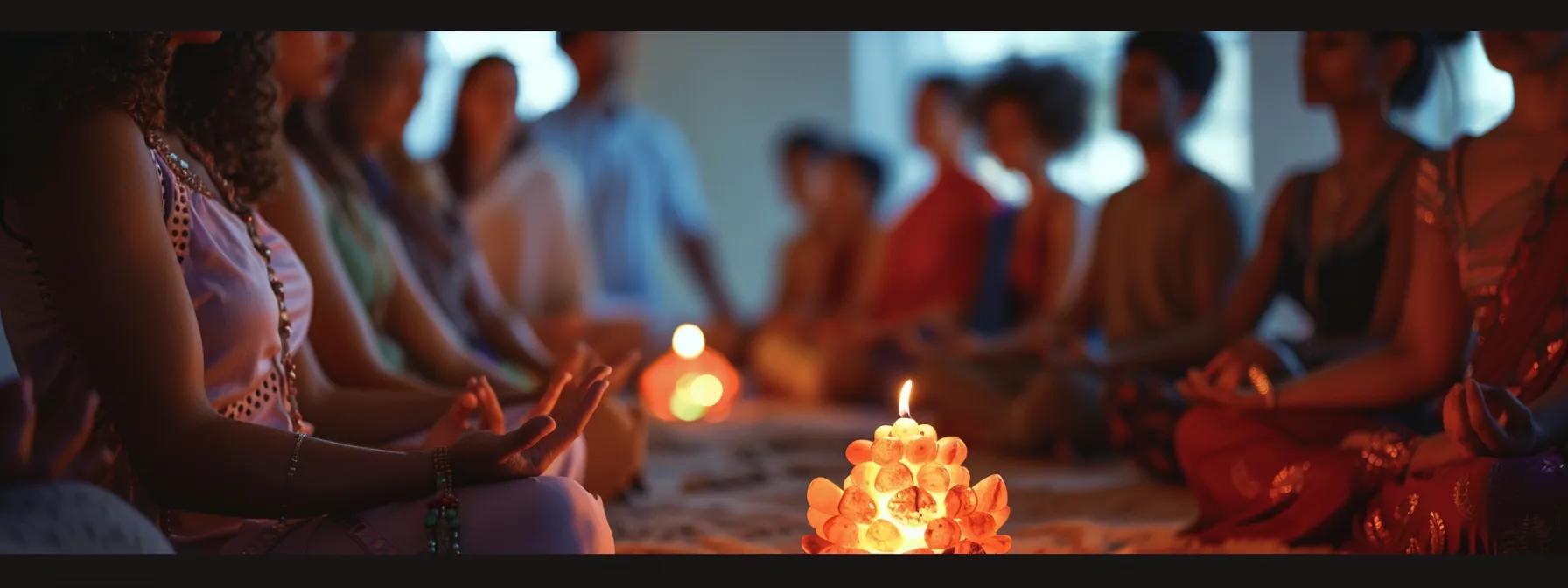
The legacy of the Three Mukhi Rudraksha continues to hold historical significance today. It reflects a revival of traditional practices as modern seekers explore its benefits for spiritual growth and emotional balance. Educational efforts play a crucial role in preserving its rich history and empowering future generations to appreciate this sacred bead‘s transformative qualities.
Recognize Continuing Historical Significance
The Three Mukhi Rudraksha maintains its historical significance through ongoing cultural practices. Today, individuals around the world continue to incorporate this sacred bead into their meditation sessions, recognizing its role in enhancing spiritual clarity and emotional balance. As practitioners share their experiences, the bead‘s legacy grows, promoting a deeper understanding of its transformative qualities.
Various spiritual communities actively educate others about the benefits of the Three Mukhi Rudraksha, facilitating workshops and discussions to preserve its rich history. By engaging with ancient texts and teachings, modern seekers can appreciate how this bead has contributed to personal growth and self-discovery throughout the ages. This process of learning not only honors tradition but also empowers individuals to integrate the Rudraksha into their own spiritual journeys.
The enduring relevance of the Three Mukhi Rudraksha is evident in its recognition within holistic healing practices. As people increasingly turn to natural remedies and spiritual tools, the bead serves as a vital resource for those pursuing emotional regulation and resilience. Its historical importance continues to inspire individuals, allowing them to harness its energy for navigating contemporary challenges.
Support Revival of Traditional Practices
Reviving traditional practices surrounding the Three Mukhi Rudraksha is essential for preserving its historical and cultural significance. Many communities around the world are now embracing these ancient rituals, integrating the bead into modern spiritual practices. This resurgence allows individuals to connect with their roots and experience the transformative benefits that the Three Mukhi Rudraksha has offered for centuries.
Educational initiatives play a crucial role in supporting the revival of these practices by providing resources and knowledge about the importance of the Three Mukhi Rudraksha. Workshops, webinars, and community gatherings focus on teaching individuals how to incorporate the bead into their daily lives, enhancing their meditation and spiritual rituals. Such efforts not only restore ancient wisdom but also empower contemporary seekers to navigate their personal journeys with greater confidence and clarity.
Collaborations with spiritual leaders and practitioners foster a vibrant exchange of ideas to ensure the continuity of traditional practices tied to the Three Mukhi Rudraksha. These collaborations can introduce innovative methods that respect ancient wisdom while appealing to modern sensibilities. By promoting these practices, individuals can experience the ongoing relevance of the Three Mukhi Rudraksha in achieving emotional balance and spiritual growth in today’s fast-paced world.
Engage in Educational Efforts to Preserve Its History
Engaging in educational efforts to preserve the history of the Three Mukhi Rudraksha is vital for fostering an understanding of its significance. Community workshops and seminars serve as excellent platforms for sharing knowledge about this sacred bead, emphasizing its role in spiritual practices. By illustrating the historical context and cultural relevance, participants can appreciate its transformative qualities more profoundly.
Incorporating online resources such as webinars and informative articles can extend the reach of educational initiatives. These digital platforms make information accessible to a much broader audience, allowing individuals worldwide to delve into the teachings associated with the Three Mukhi Rudraksha. This modern approach helps bridge the gap between tradition and contemporary understanding of spirituality.
Collaborations with schools, spiritual organizations, and cultural institutions can enrich educational programs further. Joint efforts in creating curricula that include the history and benefits of the Three Mukhi Rudraksha can cultivate a sense of community and continuity in spiritual practices. Such initiatives can lead to a deeper connection with one’s heritage, ensuring that the wisdom of past generations is preserved for future seekers:



